Sudanese Armed Forces claim strategic Blue Nile bridgehead south-east of Khartoum
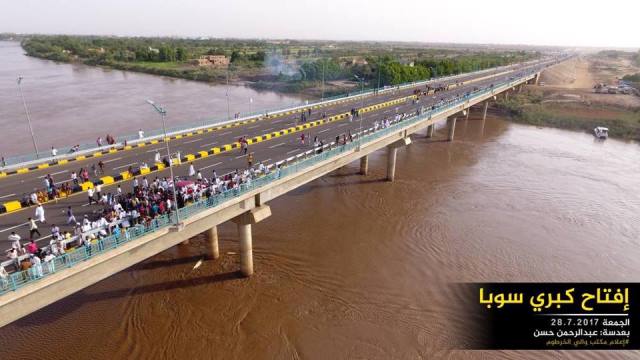
Soba Bridge across the Blue Nile, whose eastern entrance was controlled by the army (File photo: Khartoum State Media)
The Sudanese Armed Forces (SAF) claim to have established a bridgehead on the east bank of the Nile at the strategic Soba Bridge, and the SAF-aligned Sudan Shield Forces posted a video establishing the claim. The emergency room south of the belt in southern Khartoum revealed that 13 people were killed and 27 others were injured during the past week as a result of security incidents.
The SAF are advancing towards El Bagir area, which is the entrance to Khartoum from El Gezira side, with the objective of reaching the Soba El Hilla area and gaining controlling the western side of the bridge, they say.
The Soba Bridge over the Blue Nile south of the capital Khartoum, was opened in July 2017, and connects the Soba areas East and West. The length of the concrete body of the bridge is 571 meters, and its width is 27 metres with three lanes in each direction.
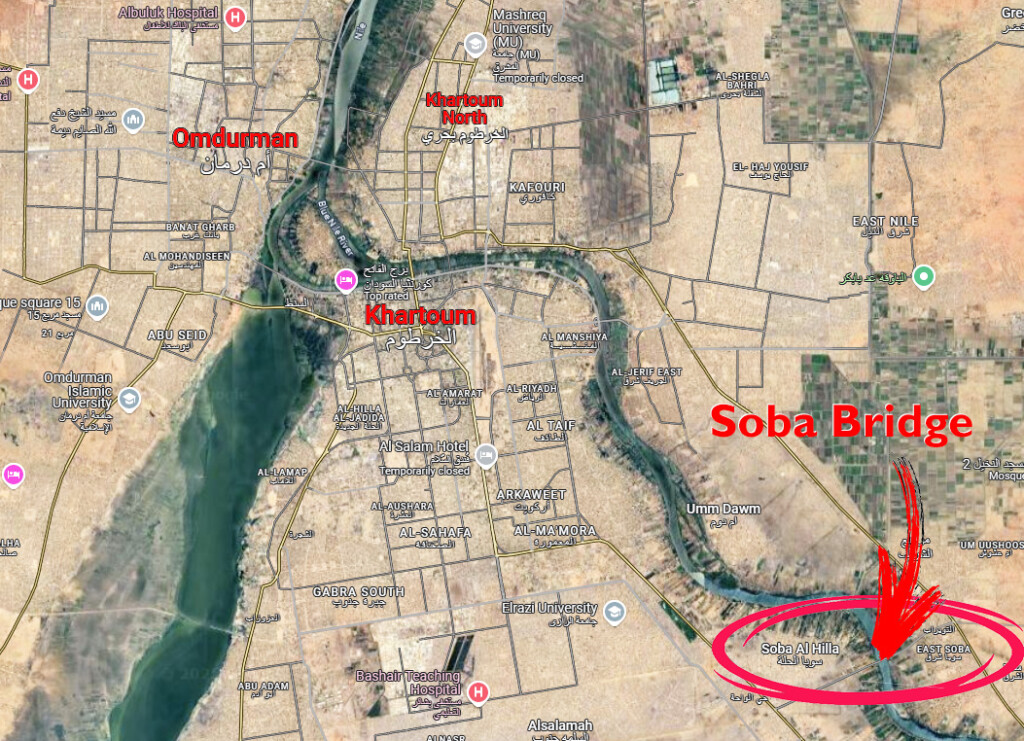
The entrances to the bridge from the western side extend for 3,450 meters to meet Wad Madani West Street, and its entrances from the eastern side extend for 2,300 meters to meet El Aylafon (Eilafon) Street leading to Hantoub Bridge from the eastern side.
The bridge connects the localities of Khartoum, Jebel Aulia, and Sharg El Nil (East Nile), and was built with the aim of contributing to relieving pressure on Khartoum and transferring transit traffic from Wad Madani Street through the ring road, and shortening the long distance to the rural areas of Jebel Aulia and East Nile.
Capital bridges
Khartoum state has 10 bridges: the Soba Bridge, El Jereif, east of Manshiyya, which connects East Nile and Khartoum, the Kober, Blue Nile and Mek Nimir bridges, which connect Khartoum North/Bahri and Khartoum, the Shambat and Halfaya bridges, which connect Khartoum North and Omdurman, and the Nile Bridge, El Fitihab Bridge, and the Jebel Aulia Dam Bridge, which connect Khartoum and Omdurman.
With the SAF in control of the eastern entrance to the Soba Bridge today, the RSF is left with only two bridges: the El Jereif Bridge, which connects El Manshiya and El Jereif East, and the Jebel Aulia Bridge.
Last week, the army took control of the northern entrance to the Kober Bridge, as well as the northern entrance to the Mek Nimir Bridge. Earlier, it seized the Blue Nile bridge, which was used during the war to link the General Command in northeast Khartoum and the Signal Corps in Khartoum Bahri.
More recently, the SAF took control of Khartoum Bahri in its entirety, having taken control of the remaining areas of Kafouri, El Ezba and Kober.
The armed forces had earlier taken control of the Halfaya and Shambat bridges. The Shambat Bridge was previously partially damaged by shelling, and the army and RSF accused each other of the bombing. Since the beginning of operations in the Halfaya area last September, communication between the Rapid Support Forces in Khartoum Bahri and Omdurman has been cut off.
In central Khartoum, the SAF control the old Blue Nile bridge, and the El Fitihab bridge, which connect Omdurman and Khartoum. In Omdurman, the RSF still controls parts of Ombadda locality and the southwestern parts of the city.
Today, army troops have taken control of blocks 14 and 15 as well as Market 15 in El Fitihab.
The SAF yesterday took control of El Geteina in White Nile state, about 50 km from the Jebel Aulia Dam and Bridge, and army soldiers from inside Jebel Aulia said their next destination was the bridge.
The Sudanese Air Force continued to launch airstrikes on the Jebel Aulia bridge in order to obstruct the passage of vehicles between Jebel Awlia and Omdurman, after the SAF advanced and took control of large parts of Khartoum.
Dead and wounded in southern Khartoum
The Khartoum Southern Belt Emergency Room said that the area, especially the neighbourhoods of Mayo and El Hussein, is witnessing unprecedented security evasions that resulted in the death of 13 people and the injury of more than 27 others by live bullets during the past week.
The residents of southern Khartoum live in a state of extreme fear in light of the escalation of crimes, which include murder and plundering, amid the absence of any effective intervention to stop these violations.
The Emergency Room noted that the situation worsened with the complete collapse of the health system after all hospitals were out of service, in addition to the escalation of the suffering of people in light of the complete interruption of communication and electricity networks.
Rapes in El Deyoum El Shargiya and surroundings
The resistance committees in El Deyoum El Shargiya, south of central Khartoum, accused the Rapid Support Forces of killing Fahd Awad Khamees while trying to escape from them after they broke into his house.
Khamees was working as a butcher in the El Gousi shop near the Bashdar intersection.
The resistance committees also reported that during the past few days, at least 10 cases of rape took place in the area.
One of the people threatened jumped from the second floor of a building to escape the abuses. Dozens of families fled on foot to the El Remeila neighbourhood, they said.
Radio Dabanga was not immediately able to obtain immediate comment from the RSF.
Recently, the army took control of the neighbourhoods of El Remeila, El Goz, El Hilla El Jadeeda, and the main street of El Sajana, all the way to the El Hurriya Street and the Jackson bus station.






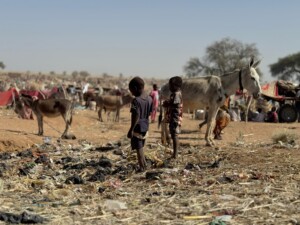
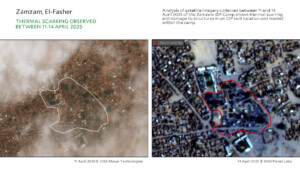
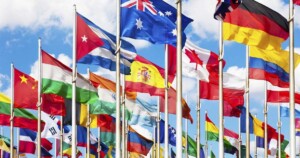
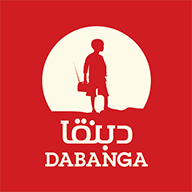
 and then
and then